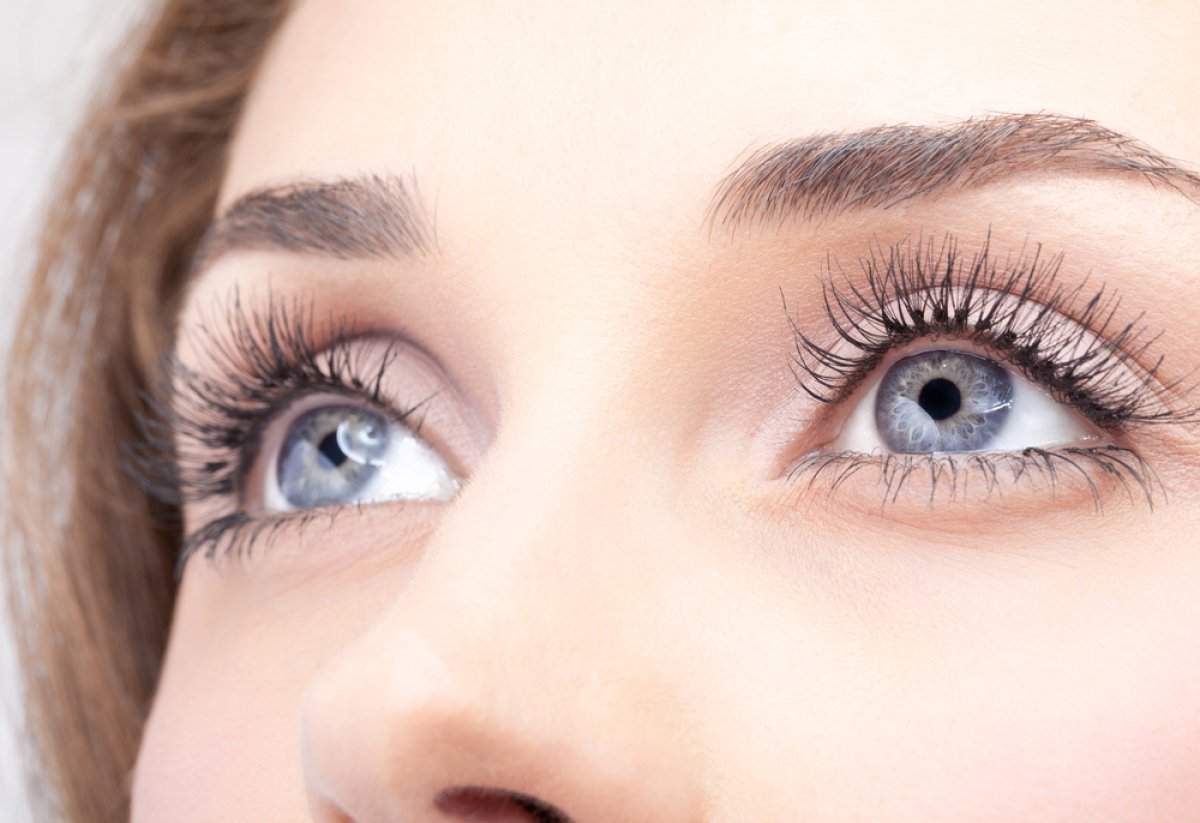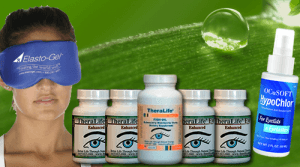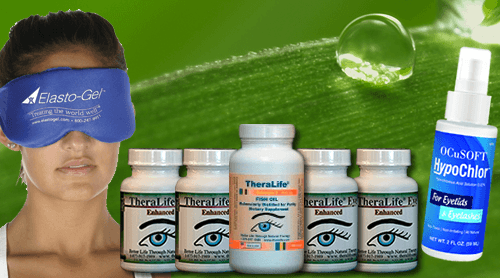Blepharitis is often misunderstood, but TheraLife.com provides clarity and effective solutions for managing this condition. Contrary to common myths, blepharitis is not due to poor hygiene or limited to older adults; it stems from bacterial infections, skin conditions, or oil gland issues. TheraLife’s products offer significant benefits to customers by addressing these root causes. Their holistic approach, which includes natural supplements and lifestyle advice, helps reduce inflammation and manage symptoms without relying solely on antibiotics.
TheraLife’s comprehensive range of products is designed to enhance eye health, offering relief for conditions like dry eyes and blepharitis. Their treatment regimens focus on improving gland function and reducing discomfort, empowering individuals to take control of their eye health. Moreover, TheraLife provides valuable resources to educate users on best practices for managing blepharitis, such as proper eye hygiene and the impact of diet.
By exploring TheraLife’s offerings, customers can debunk myths and gain a deeper understanding of effective blepharitis management, ultimately improving their quality of life.
Best Blepharitis Treatment From TheraLife
Key Takeaways
- Blepharitis is not contagious; there is no person-to-person transmission involved.
- Poor hygiene is not the primary cause; complex factors like bacterial infections and skin conditions contribute.
- Antibiotics alone do not cure blepharitis; continuous management is essential for relief.
- Contaminated eye makeup can exacerbate symptoms but is not the sole cause of blepharitis.
- Blepharitis can affect all age groups, including children, and is not limited to adults.
Understanding Blepharitis: What Is It Really?
Blepharitis, though often misunderstood, is a chronic inflammatory condition affecting the eyelid margins.
You’re likely to encounter symptoms such as redness, irritation, and crusting at the base of the eyelashes. These blepharitis symptoms can lead to discomfort and visual disturbances if left unmanaged.
It’s essential to recognize that blepharitis isn’t contagious, though it can recur if not effectively treated.
Treatment options focus on alleviating symptoms and preventing flare-ups. Regular eyelid hygiene, using warm compresses and eyelid scrubs, is often recommended as a first-line approach.
In some cases, your healthcare provider might prescribe topical or oral antibiotics, especially if bacterial involvement is suspected. Additionally, lubricating eye drops can help relieve irritation.
Managing blepharitis requires consistent care and adherence to treatment protocols. Understanding triggers and avoiding them aids in prevention, while contact lens use should be avoided during flare-ups.
Myth: Blepharitis Is Caused by Poor Hygiene
You might think that poor hygiene is the cause of blepharitis, but research indicates otherwise. Blepharitis often results from factors like bacterial infections, skin conditions such as rosacea, or malfunctioning oil glands. Understanding these causes helps clear up misconceptions and highlights that maintaining good hygiene alone isn’t a preventive measure. Studies show that immune inflammatory mechanisms play a crucial role in the development of dry eye disease, which is often associated with posterior blepharitis.
Understanding Blepharitis Causes
The misconception that poor hygiene causes blepharitis oversimplifies a complex condition. It’s crucial to understand that blepharitis can result from various genetic factors and environmental triggers. Research indicates that specific genes may predispose individuals to inflammation, making them more susceptible to blepharitis. Additionally, environmental triggers like allergens, pollutants, and even climate changes can exacerbate symptoms. It’s not merely about how often you clean your eyelids; rather, it’s about understanding the underlying mechanisms. Bacterial overgrowth or malfunctioning oil glands, possibly influenced by your genetic makeup or environment, can lead to this condition. Recognizing these causes shifts the focus from blaming personal hygiene to addressing the root causes, enabling more effective management of blepharitis for those affected. Moreover, contaminated eye makeup can lead to blepharitis and conjunctivitis, with symptoms worsening with continued use.
Hygiene Misconceptions Explained
Building upon the understanding of blepharitis causes, it’s important to address common hygiene misconceptions linked to this condition.
Contrary to popular belief, blepharitis isn’t caused by poor hygiene. Instead, it results from factors like bacterial overgrowth, seborrheic dermatitis, or malfunctioning oil glands. Effective hygiene practices and prevention strategies can help manage symptoms rather than prevent onset. In fact, eyelid hygiene is crucial for managing blepharitis symptoms, as supported by Mayo Clinic recommendations.
Consider these guidelines:
- Daily Eyelid Cleansing: Use a warm compress followed by gentle scrubbing with a diluted baby shampoo or a specialized eyelid cleanser.
- Regular Eye Exams: Routine check-ups help detect and manage blepharitis-related conditions early on.
- Balanced Diet: Consuming omega-3 fatty acids can support gland function and reduce inflammation.
These strategies focus on symptom management and improving overall eye health, not on preventing poor hygiene-related causes.
Myth: Only Older Adults Get Blepharitis
You might think blepharitis only affects older adults, but research shows it affects all age groups, including children. Studies indicate that even young patients can develop this condition, challenging the common misconception. Understanding this broad age range is essential for accurate diagnosis and effective management across diverse populations. Meibomian gland dysfunction is a primary cause of blepharitis, affecting a wide demographic without discrimination.
Affects All Age Groups
Contrary to popular belief, blepharitis isn’t exclusive to older adults; it can affect individuals of any age.
Blepharitis symptoms include itchy eyelids, redness, and crusting around the eyelashes. These symptoms can occur in anyone, regardless of age, due to factors like poor eyelid hygiene, allergies, or skin conditions such as rosacea.
Recognizing these symptoms early is essential for effective management. Chronic or acute blepharitis forms can develop, often triggered by systemic issues that may require interdisciplinary consultation for comprehensive treatment.
Treatment options vary and may include:
- Warm Compresses: Applying a warm compress to the eyelids helps loosen crusts and promote oil gland function.
- Eyelid Scrubs: Regular cleaning of the eyelid margins reduces bacteria and debris.
- Medications: Topical antibiotics or anti-inflammatory treatments can be prescribed by your healthcare provider.
Understanding that blepharitis affects all age groups guarantees timely intervention and improved eye health.
Children Can Develop Blepharitis
Many parents may be surprised to learn that children aren’t immune to blepharitis. This eye condition, characterized by inflammation of the eyelid margins, can affect children just as it does adults.
Children symptoms often include red, swollen eyelids, crusty eyelashes, and frequent blinking. Left untreated, these symptoms may lead to discomfort and potential vision issues.
Blepharitis in children requires prompt attention and appropriate treatment options. Regular eyelid hygiene, such as warm compresses and gentle cleansing of the eyelid margins, is often effective.
In some cases, pediatricians might recommend antibiotic ointments or drops to manage bacterial infections. Consulting an eye care professional guarantees that each child’s specific needs are addressed.
Early intervention can reduce the risk of chronic symptoms and improve overall eye health. Studies have shown that Theralife products can significantly reduce eyelid redness, itching, and irritation, making them a viable option for managing symptoms in children.
Common Misconception Explained
Addressing blepharitis in children underscores a wider issue: the misconception that only older adults are susceptible to this condition.
Blepharitis affects individuals across all age groups, including children. Recognizing this is essential for early detection and management.
Here’s how to spot it:
- Blepharitis Symptoms: Look for red, swollen eyelids, crusting, and itching. These indicators aren’t age-specific.
- Treatment Options: Options include eyelid hygiene, warm compresses, and prescribed medications. Tailoring these treatments to age-specific needs is important.
- Prevention and Care: Regular eye examinations and maintaining eyelid cleanliness can prevent flare-ups. Daily eyelid hygiene practices are crucial for managing symptoms and preventing the recurrence of blepharitis.
Understanding that blepharitis isn’t age-restricted guarantees timely intervention and improved outcomes.
Misconceptions can delay diagnosis, leading to complications. By dispelling myths, you can better protect eye health across all ages.
Myth: Blepharitis Is Contagious
Despite common misconceptions, blepharitis isn’t contagious. This condition arises from inflammation of the eyelid margins, often due to bacteria or skin conditions like rosacea or seborrheic dermatitis, but not through person-to-person transmission. Accurate diagnosis is essential for effective management, focusing on symptom relief and long-term strategies. Treatment options include regular eyelid hygiene, such as warm compresses and eyelid scrubs, which help reduce inflammation and bacterial buildup. Artificial tears can alleviate dryness and irritation, providing additional comfort. In some cases, medications like topical antibiotics or anti-inflammatory eye drops may be prescribed by an eye care professional for more severe symptoms. Understanding that blepharitis isn’t infectious helps in managing the condition without fear of spreading it to others. Chronic blepharitis often involves persistent inflammation, requiring ongoing care and management to prevent exacerbations.
Myth: Blepharitis Can Be Cured With Antibiotics Alone
While blepharitis isn’t contagious, another misconception is that antibiotics alone can cure it. Blepharitis symptoms, including eye redness, irritation, and crusty eyelids, require a thorough blepharitis treatment plan. Antibiotics target bacterial infections but aren’t sufficient by themselves. Here’s why:
- Chronic Nature: Blepharitis is often a chronic condition, meaning symptoms may persist or recur without continuous management.
- Multiple Causes: It can stem from bacteria, but also from skin conditions like rosacea or dandruff, needing varied treatments.
- Eyelid Hygiene: Regular eyelid cleaning is vital. Warm compresses and gentle scrubbing remove debris and reduce inflammation.
A multifactorial approach guarantees effective management. Proper hygiene is crucial, and more aggressive hygiene solutions are necessary for effective blepharitis management. You must address all underlying causes, not just bacterial, for the best blepharitis treatment.
Myth: Makeup and Skincare Products Don’t Affect Blepharitis
You shouldn’t underestimate the impact of makeup and skincare products on blepharitis, as specific ingredients can exacerbate symptoms.
Eye irritation risks increase with certain compounds, particularly those that are harsh or allergenic.
Proper cleansing is essential to minimize these risks and maintain ocular health.
Product Ingredients Matter
Understanding the ingredients in your makeup and skincare products is essential, as they can greatly impact blepharitis. Many believe that these products don’t affect the condition, but evidence suggests otherwise. Pay close attention to the ingredients for ideal eye health. Here’s why:
- Natural Remedies: Opt for products with natural ingredients, as they often minimize irritation. Ingredients such as chamomile and tea tree oil have been noted for their soothing properties.
- Ingredient Safety: Check labels for common irritants like alcohol, parabens, and fragrances, which can exacerbate blepharitis symptoms.
- Evidence-Based Choices: Research supports the importance of using hypoallergenic and non-comedogenic products to reduce flare-ups.
Scientific studies highlight safer alternatives, emphasizing ingredient safety in managing blepharitis effectively.
Eye Irritation Risks
Many people mistakenly believe that makeup and skincare products don’t influence blepharitis, but this notion is incorrect. Certain ingredients can exacerbate symptoms, leading to increased eye irritation. Fragrances, preservatives, and harsh chemicals found in these products may trigger inflammation of the eyelids. This can complicate your eye care routine and affect treatment options.
Studies highlight the importance of identifying and avoiding these irritants to manage blepharitis effectively. When selecting products, opt for those labeled as hypoallergenic or specifically formulated for sensitive eyes. These options are less likely to provoke irritation and can be integral to thorough eye care.
Consulting an eye care professional can provide guidance on suitable treatment options, ensuring you manage blepharitis while minimizing the risk of worsening symptoms.
Proper Cleansing Importance
Addressing eye irritation risks from makeup and skincare products leads us to the significance of proper cleansing practices in managing blepharitis.
Effective cleansing techniques are essential in your daily routines to minimize the impact of these products. Here’s what you should consider:
- Gentle Cleansing Agents: Use products specifically designed for sensitive eyes to prevent further irritation. Avoid harsh ingredients that can exacerbate blepharitis symptoms.
- Consistent Routine: Make cleansing a part of your daily routines, ideally twice a day. Consistency helps remove debris and makeup residues that may contribute to inflammation.
- Technique Mastery: Apply gentle pressure while cleansing, ensuring you’re reaching all affected areas without causing additional irritation.
These steps, backed by evidence, highlight the importance of proper cleansing in managing blepharitis effectively.
Myth: Blepharitis Always Leads to Vision Loss
While blepharitis can be a troublesome condition affecting the eyelids, it doesn’t inevitably lead to vision loss. In fact, with proper management and adherence to recommended treatment options, vision preservation is achievable.
Blepharitis involves inflammation of the eyelid margins, often resulting from bacterial colonization or skin conditions. This inflammation, if left untreated, may cause discomfort and blurred vision, but it rarely causes permanent vision impairment.
Effective treatment options include regular eyelid hygiene, warm compresses, and sometimes antibiotic or anti-inflammatory medications. Consistent management can mitigate symptoms and prevent complications.
Consulting an eye care professional guarantees an appropriate care plan, tailored to your specific needs, fostering both symptom relief and long-term vision preservation.
Myth: Blepharitis Is the Same for Everyone
After understanding that blepharitis doesn’t always lead to vision loss, it’s important to clarify another misconception: blepharitis isn’t a uniform condition for everyone.
Individual experiences with blepharitis can differ considerably based on various factors. Here’s what you need to know:
- Symptoms Vary: Some may experience mild itching, while others endure severe irritation and inflammation.
- Causes Differ: Blepharitis can result from bacterial infections, skin disorders like seborrheic dermatitis, or meibomian gland dysfunction, influencing individual symptoms.
- Treatment Variations: Effective management requires customized approaches. Some benefit from lid hygiene routines, while others may need antibiotics or anti-inflammatory medications.
Recognizing these distinctions is essential to tailoring your treatment plan.
Consulting with an eye care professional guarantees that your management strategy addresses your specific symptoms and underlying causes.
Myth: Home Remedies Can’t Help Manage Blepharitis
Although some may dismiss home remedies as ineffective for managing blepharitis, evidence suggests otherwise. Research indicates that simple methods, like warm compresses, can effectively alleviate symptoms by loosening crusts and improving meibomian gland function.
Regular eyelid hygiene, including gentle scrubbing with diluted baby shampoo or a saline solution, helps reduce inflammation and bacterial load. Additionally, omega-3 fatty acids, found in fish oil supplements, may support eyelid health by reducing inflammation. These strategies are accessible and can complement medical treatments.
While home remedies don’t replace professional advice, they play a significant role in managing symptoms. By consistently applying these methods, you’re likely to experience symptom relief and improved eyelid health. Always consult with your healthcare provider to tailor the best approach for you.
Myth: Blepharitis Is a Rare Eye Condition
Despite what some believe, blepharitis isn’t a rare eye condition but a common one affecting millions worldwide. Understanding its prevalence can help you recognize the symptoms and seek appropriate treatment options.
Blepharitis symptoms include:
- Red, swollen eyelids – Often mistaken for allergies, this is a primary indicator.
- Crusty eyelashes – Especially upon waking, a telltale sign of blepharitis.
- Burning or itching eyes – A persistent discomfort that shouldn’t be ignored.
Timely identification leads to effective treatment options, such as warm compresses, eyelid scrubs, and prescribed medication.
Don’t underestimate this condition’s frequency; it’s essential to address it promptly. By staying informed, you enhance both your eye health and overall quality of life.
Best Blepharitis Treatment From TheraLife
Frequently Asked Questions
Can Diet Impact the Severity of Blepharitis Symptoms?
You might wonder if diet affects blepharitis symptoms. Research shows nutrient deficiencies can exacerbate symptoms, while consuming anti-inflammatory foods may help.
Omega-3 fatty acids, found in fish, and antioxidants in fruits and vegetables can reduce inflammation. Conversely, diets low in these nutrients might worsen the condition.
Therefore, maintaining a balanced diet rich in anti-inflammatory foods could potentially decrease blepharitis severity, supported by evidence-based studies.
Are There Specific Environmental Factors That Can Trigger Blepharitis?
You mightn’t realize it, but pollution exposure can greatly trigger blepharitis symptoms. Studies show that pollutants irritate your eyelids, worsening inflammation.
Additionally, humidity levels play an essential role. Low humidity can dry out your eyes, exacerbating blepharitis. Conversely, high humidity may increase oil production, leading to blocked glands.
Is Blepharitis Associated With Any Other Eye Conditions?
Imagine blepharitis as the storm in your eyes’ weather system. It’s often linked to other eye conditions like dry eye syndrome and conjunctivitis.
Blepharitis causes inflammation that can pave the way for eye infections, acting as a catalyst for further complications. Studies highlight its association with meibomian gland dysfunction and rosacea, creating a domino effect on ocular health.
How Long Does It Typically Take to See Improvement With Treatment?
When considering treatment duration for blepharitis, you’ll typically notice improvement within a few weeks.
However, it’s crucial to consistently follow your healthcare provider’s recommendations.
Regularly performing symptom evaluation helps track progress and adjust treatment plans as needed.
Evidence suggests that maintaining proper eyelid hygiene and using prescribed medications can accelerate recovery.
Are There Any Genetic Predispositions to Developing Blepharitis?
You’re wondering if there are genetic predispositions to developing blepharitis.
Research indicates genetic factors and familial tendencies might play a role.
Studies suggest that certain genes linked to skin conditions like rosacea can increase susceptibility.
If you’ve got a family history of blepharitis or related skin disorders, your risk may be higher.
However, more research is needed to fully understand these genetic influences and their impact on developing this condition.
Best Blepharitis Treatment From TheraLife
Conclusion
At TheraLife, we understand that managing blepharitis is akin to nurturing a garden; it requires consistent care rather than extreme interventions. Our products are designed to address the root causes of eye conditions, offering relief and promoting eye health without relying solely on antibiotics. TheraLife’s natural solutions are effective for people of all ages, helping to manage symptoms and prevent complications like vision loss. Our holistic approach includes dietary adjustments and lifestyle changes that empower individuals to tackle blepharitis and related conditions proactively. Trust TheraLife to provide evidence-based, personalized care for lasting results.





